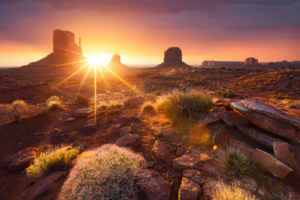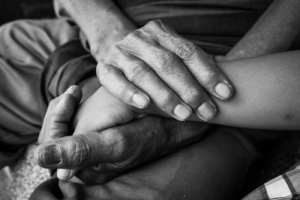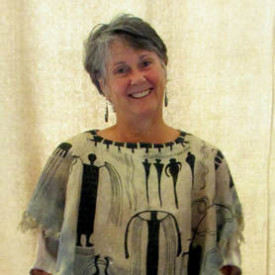 The young man was goth-like, pale and pimply, dressed in a long black coat and lecturing to a circle of listeners at an Earth First! gathering in the western wilderness. The subject of his talk was the cultural appropriation of earth-based spiritual traditions. He had embraced his Wiccan ancestral roots, he raged, and anyone white who strayed into Indigenous spirituality was simply politically incorrect, if not morally indefensible.
The young man was goth-like, pale and pimply, dressed in a long black coat and lecturing to a circle of listeners at an Earth First! gathering in the western wilderness. The subject of his talk was the cultural appropriation of earth-based spiritual traditions. He had embraced his Wiccan ancestral roots, he raged, and anyone white who strayed into Indigenous spirituality was simply politically incorrect, if not morally indefensible.
With the arrogance of youth and the disrespect to elders that the predominate culture is known for, he had no patience for any of us who had walked the Good Red Road for decades without having checked our “23 and Me”. We were the worst example, he informed us, of oppression, colonialism, appropriation, etc. Guilt descended upon us as he rained the lexicon of radical philosophy down on our heads.
Certainly the lecture started me thinking about why and how, after long spiritual seeking, I had found Great Mystery and the Goddess while sitting on dusty blankets in a dark sweat lodge or peyote meeting. I came up with some answers that he had no interest in hearing, so I turned to another elder for some pleasantly surprising confirmation of my thoughts.
Genetically, as far as I know, I’m mostly Scottish. My last name, from the Viking word for horse, is common among both the Sioux and Cherokee. Because I’m female, there’s no way of knowing if I’m related to John Ross, the first elected Cherokee chief after the Trail of Tears, although I did grow up in his Appalachian neighborhood. The English side of my family probably killed the Scottish side as well as the Massachusettes tribes they encountered after sailing into Plymouth. Who knows? We’ve been here awhile. All I know is that I love the desert, my theory being that my ancestors suffered too long in rain-drenched kilts. I cringe at the sound of bagpipes. I crave the smell of sage. Sometimes I think about past lives: Wise Women of The Burning Times; the scorned Gypsy fortune teller; the prophecy of Indian souls returning in bodies of The Rainbow Warriors.
 To me, “earth-based spirituality” means the actual earth that’s been in my teeth and up my nose for most of my adult life even if my ancestor’s bones aren’t ground into it. It’s the land I live on that speaks its spirit to me. And who better to learn the language of that spirit from than those humans who have lived with it for thousands of years? I am grateful, humbled and blessed that the Lakota have been generous with their teaching and invited so many of us Wasichu into the Inipi.
To me, “earth-based spirituality” means the actual earth that’s been in my teeth and up my nose for most of my adult life even if my ancestor’s bones aren’t ground into it. It’s the land I live on that speaks its spirit to me. And who better to learn the language of that spirit from than those humans who have lived with it for thousands of years? I am grateful, humbled and blessed that the Lakota have been generous with their teaching and invited so many of us Wasichu into the Inipi.
And I am careful, especially in these days of renewed racial hatred and backlash, to stay near the back of any gathering and keep my mouth shut. Yet when I joined the pipe ceremony, unwrapping my own Sundance pipe one dawn at Standing Rock, nobody glared, lectured or gave any indication that I hadn’t earned the sacred instrument in my hands.
A Native American artist I know is so passionate about non-Indian artists making a profit from depicting cultural items in their work, a pot here, a rattle there, the ubiquitous dream catcher sold in every western gas station convenience store, that he got himself kicked out of a gallery for his confrontational complaints. Artists and their romantic attraction to all things Indian is a horse that left the barn a couple hundred years ago. If he was going to be such a purist, I reminded him, then he should stop wearing jeans (invented by a Jew named Levi during the gold rush), stop wearing cowboy boots invented by a white cobbler to fit stirrups on the saddles of horses brought in by the Spanish, not to mention his (the metalwork also a Spanish import) silver Navajo jewelry. French trader’s glass beads replaced quill work in the Plains Indian’s clothing, jingle dresses wouldn’t be the same without tin can lids to curl into jingles, the Pacific Northwest button capes would look pretty different, the Pendleton blanket, the Morning Star quilt, called Star of Bethlehem and Texas Star by it’s original colonizing seamstresses. And how could there be Seminole patchwork without sewing machines and cotton cloth? The forged iron pipe tomahawk prized by warriors who had no knowledge of metalworking…I think I wore him down by proving that the creativity of Indian culture incorporated a wonderful ability to appropriate from the oppressor!
Once I tried hard to suss out, to really connect with my ancestral spirituality. I went to Glastonbury (the Sedona of England, I discovered). Although awesome, Stonehenge, Avebury, the Burrows and Tor felt like archeological sites. I shivered with the ambiance of the White Spring but discovered it to be touted as “a tourist attraction in a Victorian pump house.” I can only describe the energy as an amputated limb, cut off long ago by the Church. Despite the attempt at to resuscitate paganism, that’s what it felt like: a non-breathing beautiful corpse. Nothing has transfixed me quite like the breath of wind shimmering the leaves of the Sundance Tree.
 In my work as a shamanic counselor trained in the very universalist philosophy of the Foundation of Shamanic Studies, I try to avoid using living Native American rituals I’ve participated in. I’d never consider “pouring a lodge” for instance, or singing spiritual songs outside the ceremonies for which they were meant. But little things creep in: tobacco ties wreath a client for protection; on my altar lies the eagle feather given when I joined the Native American Church; a rattle from Peru; lava from the throat of Pele; clap sticks from Australia,;a small Maori drum; a copy of an Alaskan Yupik spirit catcher…Ancestral tools appear too: candles, a pendulum with Celtic designs, a rune stone. Sometimes “Aho” and “Blessed Be” slip from my lips one after the other during prayer.
In my work as a shamanic counselor trained in the very universalist philosophy of the Foundation of Shamanic Studies, I try to avoid using living Native American rituals I’ve participated in. I’d never consider “pouring a lodge” for instance, or singing spiritual songs outside the ceremonies for which they were meant. But little things creep in: tobacco ties wreath a client for protection; on my altar lies the eagle feather given when I joined the Native American Church; a rattle from Peru; lava from the throat of Pele; clap sticks from Australia,;a small Maori drum; a copy of an Alaskan Yupik spirit catcher…Ancestral tools appear too: candles, a pendulum with Celtic designs, a rune stone. Sometimes “Aho” and “Blessed Be” slip from my lips one after the other during prayer.
As Casteneda’s Yaqui sorcerer, Don Juan, told us “All paths are the same: they lead nowhere…Does this path have a heart? If it does, the path is good.” I’m not going to apologize for my politically incorrect spirituality. When it comes down to it, it’s just the “stuff” of religion and dogma – a structure we’ve invented to try to figure out what we’re doing here on Earth, with Life. Our beliefs and rituals are merely an expression of homo sapien’s “god gene”. Celebrating diversity, striving for sovereignty are important, but sharing the beauty of our paradigms with each other is more important. That’s Aloha, Namaste, Love. Which we all need a lot more of in these shifting days.





Thank you for this beautifully written article and for sharing from a much wider (and wiser) perspective. I have read many an article that condemns even the slightest whiff of cultural appropriation within spiritual communities and personal practices. This type of rhetoric feels like spiritual shaming and is anything but the compassionate and creative expression of the Great Mystery. Perhaps some find irony more compelling than sovereignty. As several teachers of shamanism have shared with me, shamanism is a living tradition – and it’s constant evolution is what keeps it a powerful and sacred gift humanity shares.
Enjoyed the article and it certainly strikes a chord. I spent my childhood on a Nebraska farm and learned to love that land. Have you ever noticed how often people who live in different places choose pictures to hang on their walls that reflect the land they live on? We love the lands we live on, and if you travel around you probably felt love for the lands you visited. All our ancestors migrated around for thousands of years responding to cooling and warming climates and the availability of food and water. We connect to the spirits of the lands with our appreciation and love. They merge with us and influence how we feel and act. We belong to the land more than it belongs to us. If we resonate with the spirit of a land like a person whose ancestors have lived there longer, it’s only natural. We share a consciousness with the land and with the others who love it.
But I can understand why some indigenous people object to others adopting their sacred ceremonies when the outsiders don’t understand what effect the ceremonies are meant to produce. If a particular ceremony has always induced a sense of holiness and connection with the divine n you, and someone else mimics it without understanding, perhaps leaving out important parts, or approaching it without respect or without being in the right mental and emotional state, so that it no longer functions as a bridge to the divine, you might feel that your original ceremony had been damaged. You might find yourself unable to think of your ceremony without also thinking of the mistakes, so that your own sense of its holiness is lost and you feel angry. This is probably why some people protect their sacred rites with secrecy.
It would be nice if everyone in this culture would get over the habit of being offended. It’s such an ego trip. If someone knows a way to connect with the divine, it seems to me that the best thing they could do would be to teach it to others, including the proper ways to prepare their hearts and minds so that it works for that purpose. It’s not the particular symbols and acts of a ceremony that are important, it’s the connection with the divine they can produce. The people who are most vocal in objecting to the use of their symbols and ritual acts by outsiders seem to see them more as badges of identity than as living spiritual openings. It’s immature, but we all go through this stage as we grow up, and they will eventually grow out of it and realize that it’s more important to share our Oneness than cling to a well-defended, and ultimately illusory “identity.”
It sounds like Winter was taught by mature Native Americans to do the ceremonies in the right spirit, and that can only be beneficial for everyone.
Thank you for this.
Something I have struggled with for most of my shamanic life time…I love returning to Don Juan’s quote.
Many blessings of grace and peace and wellness be upon you!
Lauri Shainsky
I loved this article! Perfectly said and beautifully written.
thank you Winter, for this paper. I appreciate the approach of the Foundation for Shamanic Studies of respectful acknowledgment of many cultural ways to spirit. In my practice with others, I try to make clear where each practice originated and my intent to honor that culture. When I have been given permission to tell a teaching story from the culture of my Native American teacher, I am careful to tell it exactly as my teacher did, and the let the listener know I have permission to share that story.
And I wear Aran sweaters even though I am not Irish……..
Wonderful article that hits on some of the challenges I have met and continue to meet. I appreciate your candidness and presenting your authentic self. This term “culture appropriation” has become a trigger for me, and a sticking point of moving forward in my own spiritual growth and studies. Your take on it gives me words to sit with.